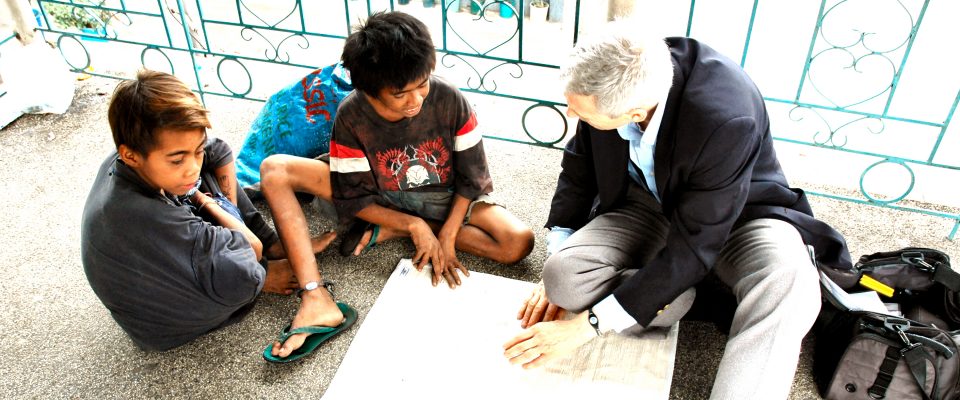In recent years, resolving poverty by more education for children has been a popular avenue for international relief agencies to bring stability and progress of all countries in our complex global economy. But does ‘education’ really address the cause and nature of generational and culture poverty that has endured in some regions for hundreds of years?
Confusing cause with effect, however, conventional concepts of education have been tried and failed so often, you have to wonder if it is not actually contributing to the cause of poverty itself, rather than a solution. For example, on the surface, the cause of poverty is simply lack of money by poor people. So, the solution here seems to be to simply give them more money to the children or families or government. Or, set up more schools to make sure all poor children are included. In practice, however, applying this “more education” logic does not address much less solve the underlying cause of the problem, which is really the lack of proper character development in children. Conventional schooling, subjecting children to a formal academic curriculum under the dictatorial control of the adult teacher, only contributed to the child’s attitude and pattern of dependency and low self-image.
Unfortunately, government agencies, and prominent private relief organizations have been bound to this superficial logic of more money and schooling, never addressing the true causes of poverty. Sadly, the US government has bought into this faulty logic in its efforts to eradicate poverty by getting children out of the labor field, and into more education. For example, the US Department of Labor (DOL) has recently set up a program to take poor children off the streets, and them to conventional schooling instead. Funding such projects to the amount of some $350 million dollars have been made for “education initiative” grants for targeted poor countries. However, these efforts are limited to conventional education only.
Projects funded by DOL vary in their style of spending money for education; however, many only seek to raise awareness of child labor by distributing notices or conducting lectures and workshops to urge greater attention to the problem. Other projects spend large sums of money to study and document the problem, without ever getting to any “education” for the children at all. What good does this approach serve to significantly solve the problem?
Happily, there is a type of “new education” that can effectively address and ultimately solve the “character” issue which lies at the heart of cultural poverty. This is the approach of the International Montessori Society (IMS) in its “character teaching” project.
The IMS “Character Teaching” (CT) project uses a novel “exchange of value” concept, which involves giving a small amount of money to poor working children in exchange for a brief amount of their time for instruction in basic academic skills. Detractors and conventional educators object to this time-money concept because they say that giving even a small amount of money to poor working children, no matter how it is regulated and controlled, will corrupt them and encourage their further harmful and irresponsible behavior. By contrast, Lee Havis, creator of the CT project, argues, “this ‘exchange of value’ is vital for establishing a relationship of trust, respect and accountability with the children involved. It allows them to directly experience self-worth, integrity and personal accountability, which repeated over time, will ultimately become deeply incorporated into their nature and character for life”.
The Character Teaching project follows the basic scientific approach pioneered by Dr. Maria Montessori in her observation and research with poor working children in the early 1900’s. In 1907, Montessori applied this approach with such children in the slums of Rome, Italy. She set up an environment for self-directed learning by these children, and in so doing, discovered that they revealed inborn natural qualities of self-discipline order, integrity, and instincts for independence. Much later, Lee Havis described this unique environment as following laws of nature, and the function of the adult to control the environment, not the child. Only lately, has the International Montessori Society brought this approach to a level that could be employed effectively to train large numbers of teachers in this precise and exacting type of scientific observation.
According to Lee, a key factor in the potential success of the IMS character teaching project is using a new comprehensive technology he perfected and consolidated for Montessori teaching in 2003. He says, “Combining this new technology of Montessori teaching with the concept of ‘exchange of value’, we have an exciting opportunity to solve the cause of poverty and abusive child labor that was never possible before. Now, it just waits for a country government and the necessary local leadership to give this unconventional project a real chance to operate.”
For further information, contact:
Lee Havis
International Montessori Society
9525 Georgia Ave. #200
Silver Spring, MD 20910
https://imsmontessori.org
301-589-1127 • email: havis@erols.com

